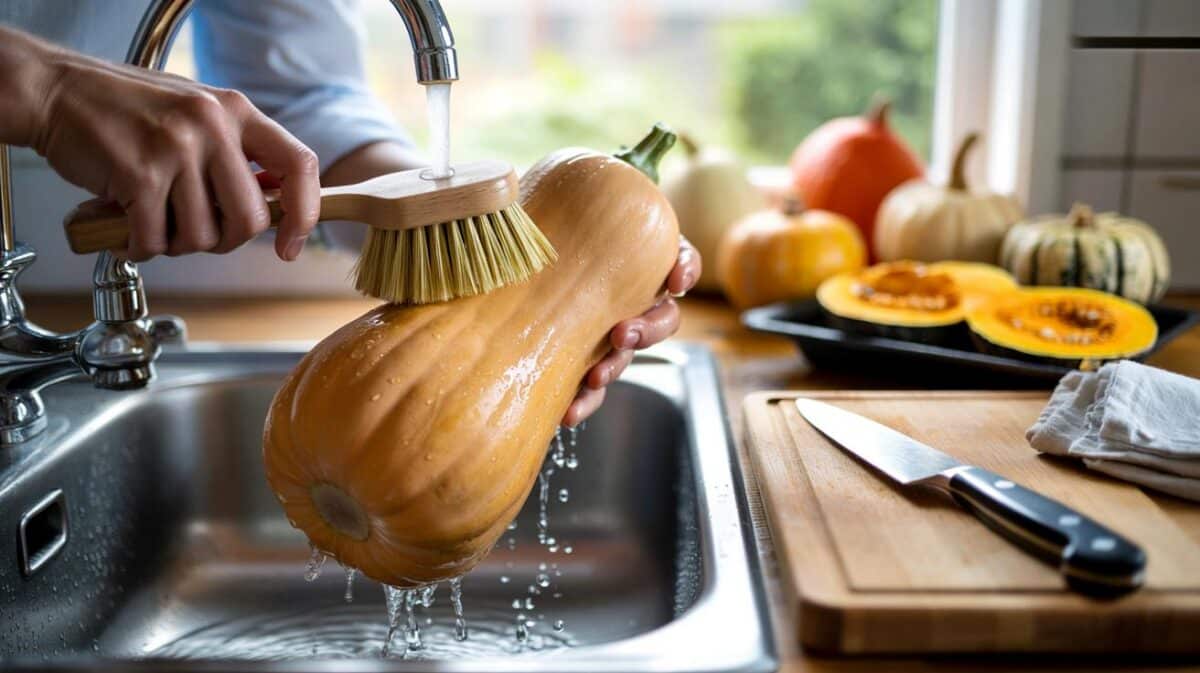A tiny split can spray water, time and money.
Across the UK, more households are reporting split shower hoses as temperatures dip. We tested the quickest hands-on fix that needs no tools, and checked what it actually saves in minutes, litres and pounds.
Why this matters now
Cold weather nudges plastics and rubbers to stiffen, then crack. Kinks worsen as hoses are pulled around radiators and bath edges. Call-out fees for plumbers start around £80, before parts. A standard replacement hose costs £8–£25. Many models fit by hand in minutes. Water companies warn of avoidable wastage from small leaks. A pinhole can add litres to every shower.
Most UK shower hoses use 1/2 inch BSP threads and will hand-tighten with a fresh rubber washer on each end.
Households under metered tariffs feel every extra litre. Renters lose time waiting for approval or trades. Owner-occupiers eye simple wins that do not touch the main plumbing. This is one.
Spot the failing hose before the flood
Early warning signs you can see and hear
- Fine mist or sideways spray from the middle of the hose under pressure.
- Telltale white crust near the ends where water seeps and dries.
- A faint hiss when the shower runs, even with a normal flow.
- Warm water pooling on the rim of the tub or at the riser rail base.
- Patches of rust on cheap braiding that signal a broken inner liner.
Catch these signs early and you protect tiles, plaster and neighbouring flats. Leaks migrate. Damp travels through grout and plasterboard.
What actually fails inside the hose
Most hoses contain a soft inner tube protected by metal or plastic coils. Hard water deposits stiffen the liner from the inside. Repeated twisting fatigues the tube. A sharp bend forms a crease that splits under heat. Cleaning chemicals bite the rubber if they pool under the braiding. Autumn humidity slows drying and keeps weak spots wet. The result is a pinhole that opens into a tear.
The no-tool method, step by step
Preparation in 60 seconds
Turn the shower control to off. Close the isolating valve if you have one. Lay a towel to catch drips. Keep a dry cloth for grip. Unpack the new hose and find the two rubber washers.
Removal in 90 seconds
Hold the connector at the tap end. Twist the nut anti-clockwise by hand. Use the cloth if it is slippery. Repeat at the handset end. Keep old washers only as a temporary backup. Bin swollen or cracked washers.
Fitting in five minutes
- Press a new washer into the female end of the hose that will meet the tap or mixer.
- Offer the nut to the thread straight-on. Do not cross-thread the first turn.
- Twist clockwise by hand until the nut stops freely. Hand-tight is enough.
- Repeat at the handset end with the second washer. Keep the hose untwisted.
- Align the hose so it hangs without a tight loop at rest.
Hand-tight is right. Over-tightening crushes the washer, distorts the seal and starts the next leak.
| Step | Typical time | Cost | Risk level |
|---|---|---|---|
| Remove old hose | 1–2 minutes | £0 | Low |
| Fit new washers | 1 minute | Included with hose | Low |
| Attach new hose | 3–6 minutes | £8–£25 | Low |
Test, troubleshoot and keep it leak-free
The quick test that tells you it worked
Open the water slowly. Run warm, not scalding. Pass your hand along the hose and around both nuts. Look for beads of water. The seal should stay dry at full flow. Rotate the handset a few times to check against twisting.
If it still drips
- Stop the flow and reseat the washer flat in the nut.
- Check for grit on the mating face of the tap or handset.
- Start the nut by hand again to avoid cross-threads.
- Replace a perished washer with a fresh one from a mixed pack.
- Use a single wrap of PTFE tape on a worn male thread if needed. Do not overdo it.
A tiny drip at the connector often points to a tired washer, not a faulty hose or tap.
What you save in minutes, litres and pounds
A routine call-out can cost £80–£120. A mid-range hose costs £12–£18. The swap takes about nine minutes on a typical mixer. A pinhole can waste several litres per shower. At 10 litres per minute for eight minutes, a misdirected spray can add 10–12 litres to a bathroom floor. Meters make that waste visible on the bill. The hand-tight method prevents creep leaks that run all week.
Choose a better hose next time
Features that extend service life
- Anti-twist sleeves reduce kinks when the handset rotates.
- Stainless-steel braiding resists UV and cleaning chemicals better than bare PVC.
- Silicone-lined models cope well with hard water and heat cycles.
- Standard length is 1.5 m. Tall users or over-bath setups may prefer 1.75–2.0 m.
- Look for spare washer packs. Cheap washers flatten early.
Hard water areas benefit from a limescale-resistant handset. A descaling rinse once a month keeps pressure healthy. A soft bend radius prevents that first fatal crease.
Safety notes you should not skip
Check the temperature limiter after refitting to avoid scalding. Keep the power isolated if you have an electric shower, and follow the unit’s manual. Do not force threaded plastics on budget taps. A quarter-turn too far can crack a housing. Isolate the supply if your mixer has service valves. Wipe splashes to prevent slips.
When a quick swap is not enough
Some leaks start at the mixer body or at an integral handset cradle. Pitting on the tap seat, split riser hoses and failing thermostatic cartridges need different parts. If water appears behind a panel, stop and consult the building’s shut-off plan. Flats with unvented cylinders may have extra safety valves that should not be disturbed.
Useful add-ons and related fixes
A flow-limiter disc can clip into many handsets to tame water use without a flat spray. A swivel elbow at the mixer end reduces torsion and extends hose life. A simple isolation valve below the bath lets you work dry next time. Keep a small envelope of 1/2 inch rubber washers in the bathroom cabinet. That £2 pack prevents weekend drips.
Families can turn this into a five-minute household check-up. Inspect the hose, handset and riser rail monthly. Spin the anti-twist sleeve. Flush the handset in warm vinegar if the spray weakens. These tiny habits delay the next split and keep the hot morning shower on schedule.








